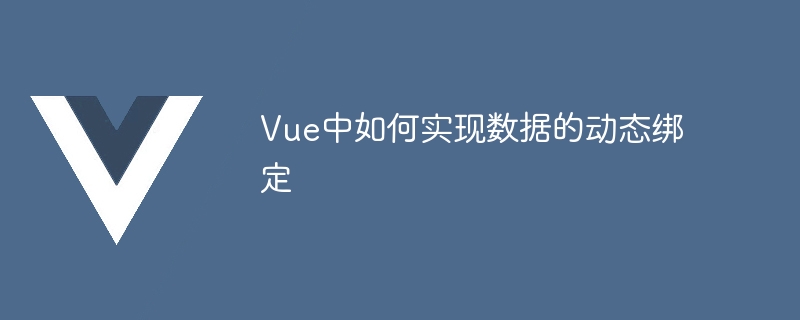

How to implement dynamic binding of data in Vue
Vue is a popular JavaScript framework that is widely used in front-end development. One of its main features is the dynamic binding of data. Through Vue's responsive system, we can easily automatically update related views when data is modified. This article will introduce the implementation method of dynamic binding of Vue data and provide specific code examples.
To implement dynamic binding of data in Vue, you need to use a Vue instance to manage data. The data option in the Vue instance can define the data we need to bind. For example, we can define a message property in a Vue instance:
var app = new Vue({ el: '#app', data: { message: 'Hello Vue!' } })
In this example, we define a data property named message and set its initial value to 'Hello Vue!'. Next, we need to use the Vue instance's data attributes in the HTML and bind them to the corresponding DOM elements.
{{ message }}
In this example, we use double curly brace syntax to bind the message attribute in the Vue instance to the p element. In this way, when the message attribute in the Vue instance changes, the corresponding p element will be automatically updated.
In addition to the double curly brace syntax, Vue also supports the use of the v-bind directive for data binding. The v-bind directive is used to dynamically bind data attributes in a Vue instance to attributes of HTML elements. The following is an example of using the v-bind directive:
In this example, we use the v-bind directive to bind the imageSrc attribute in the Vue instance to the src attribute of the img element. In this way, when the imageSrc attribute in the Vue instance changes, the src attribute of the corresponding img element will also be automatically updated.
Binding events are another common dynamic binding operation in Vue. Vue uses the v-on directive to bind events. The following is an example of using the v-on directive to bind a click event:
点击了 {{ count }} 次
In this example, we use the v-on directive to bind the increaseCount method in the Vue instance to the click event of the button element. When the button element is clicked, the increaseCount method will be called, thereby updating the value of the count attribute in the Vue instance. The corresponding p element will also automatically update to display the latest number of clicks.
To sum up, Vue's dynamic data binding can be achieved through the data option and related instructions. By using double curly brace syntax, v-bind directive, and v-on directive, we can easily dynamically bind data attributes and related DOM elements in the Vue instance to achieve real-time updates of data. I hope the sample code in this article can help readers better understand the implementation of dynamic data binding in Vue.
The above is the detailed content of How to implement dynamic binding of data in Vue. For more information, please follow other related articles on the PHP Chinese website!




